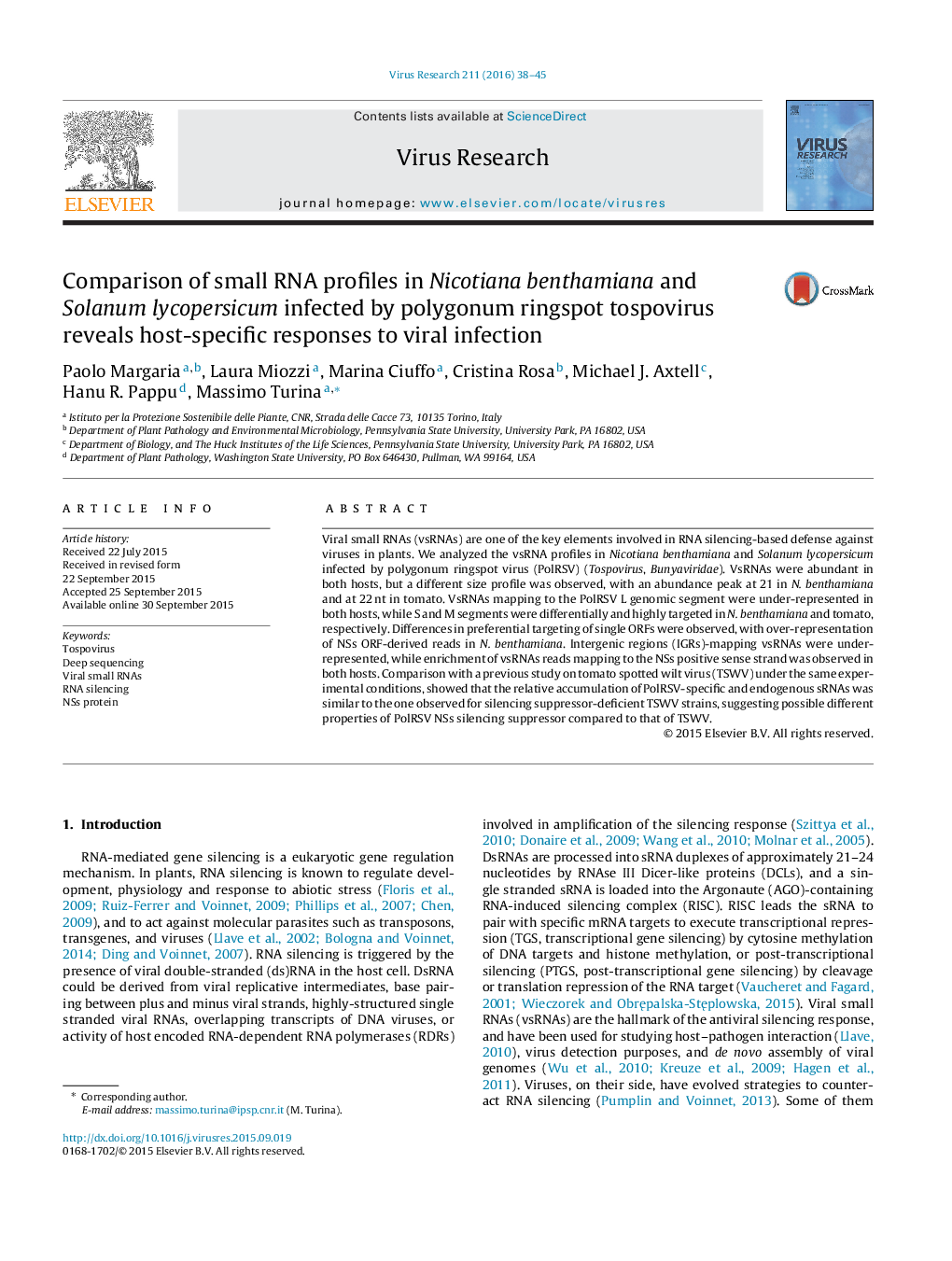| Article ID | Journal | Published Year | Pages | File Type |
|---|---|---|---|---|
| 3427970 | Virus Research | 2016 | 8 Pages |
•PolRSV vsRNA size profile is different between Nicotiana benthamiana and tomato.•Allocation of vsRNAs to the M and S genomic segments is host-specific.•NSs reads are over-represented in Nicotiana benthamiana.•NSs reads are enriched in the viral strand in both hosts.•PolRSV shares properties with silencing suppressor-defective TSWV isolates.
Viral small RNAs (vsRNAs) are one of the key elements involved in RNA silencing-based defense against viruses in plants. We analyzed the vsRNA profiles in Nicotiana benthamiana and Solanum lycopersicum infected by polygonum ringspot virus (PolRSV) (Tospovirus, Bunyaviridae). VsRNAs were abundant in both hosts, but a different size profile was observed, with an abundance peak at 21 in N. benthamiana and at 22 nt in tomato. VsRNAs mapping to the PolRSV L genomic segment were under-represented in both hosts, while S and M segments were differentially and highly targeted in N. benthamiana and tomato, respectively. Differences in preferential targeting of single ORFs were observed, with over-representation of NSs ORF-derived reads in N. benthamiana. Intergenic regions (IGRs)-mapping vsRNAs were under-represented, while enrichment of vsRNAs reads mapping to the NSs positive sense strand was observed in both hosts. Comparison with a previous study on tomato spotted wilt virus (TSWV) under the same experimental conditions, showed that the relative accumulation of PolRSV-specific and endogenous sRNAs was similar to the one observed for silencing suppressor-deficient TSWV strains, suggesting possible different properties of PolRSV NSs silencing suppressor compared to that of TSWV.
